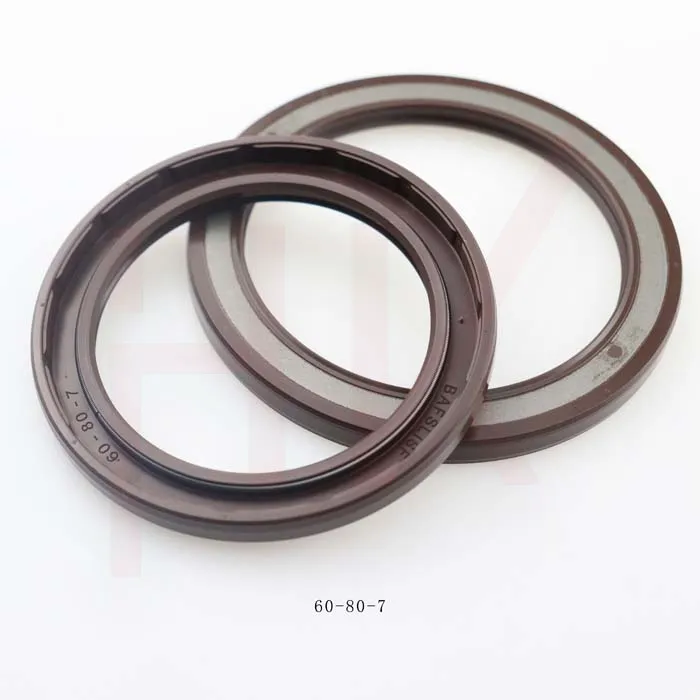Dhj . 13, 2024 17:48 Back to list
hydraulic seal replacement
Hydraulic Seal Replacement A Comprehensive Guide
Hydraulic systems are integral to a vast range of machinery and equipment, providing the necessary force to operate hydraulic cylinders, motors, and other components. One critical element of these systems is the hydraulic seal, which prevents fluid leakage and maintains the pressure required for effective operation. Over time, however, seals can wear out due to exposure to high pressures, temperatures, and contaminants, leading to inefficiencies or system failures. Therefore, timely hydraulic seal replacement is essential for maintaining optimal performance. This article serves as a comprehensive guide to hydraulic seal replacement, covering the importance of seals, signs of wear, and steps to perform a successful replacement.
Importance of Hydraulic Seals
Hydraulic seals play a crucial role in the overall function of hydraulic systems. They are designed to contain hydraulic fluid within the system while preventing contaminants from entering. This containment is vital for several reasons
1. Efficiency Hydraulic seals ensure that the system maintains the necessary pressure for efficient operation. Any leakage can lead to decreased performance and increased energy costs.
2. Protection By preventing contaminants from entering the hydraulic system, seals protect critical components from damage, which can prolong the life of the system and reduce maintenance costs.
3. Safety A hydraulic system that operates under malfunction due to seal failure can pose safety risks, including the potential for hydraulic fluid spillage, which can be hazardous to both operators and the environment.
Signs of Hydraulic Seal Wear
Recognizing the signs of hydraulic seal wear is crucial for timely replacement
. Common indicators include1. Fluid Leaks One of the most evident signs of a failing seal is the presence of hydraulic fluid leakage. If you notice fluid pooling around hydraulic components, it could signal a bad seal.
2. Decreased Performance A noticeable drop in the performance of hydraulic machinery can indicate seal wear. This may include slow operation of cylinders or inconsistent performance under load.
3. Increased Noise Unusual noises, such as grinding or whining, may also point to seal failure. This could be due to the compromised integrity of the seal leading to increased internal wear of the hydraulic components.
hydraulic seal replacement

4. Damaged Seals Regular inspections can reveal physical damage to the seals, such as cracks, tears, or hardening that can occur over time.
Steps for Hydraulic Seal Replacement
Conducting a hydraulic seal replacement may seem daunting, but with the proper knowledge and tools, it can be accomplished effectively. Below are the steps to follow
1. Safety First Always ensure that the machinery is turned off and depressurized before beginning any work. Use personal protective equipment, including gloves and goggles.
2. Disassemble the Component Carefully remove the hydraulic component housing the seal. This may require the undoing of bolts or screws and detaching hoses, so ensure you have a container to catch any residual fluid.
3. Remove the Old Seal Gently pry out the old seal using a seal puller or similar tool. Be cautious not to damage the housing or other components during this process.
4. Clean the Area Once the old seal is removed, thoroughly clean the seal groove and surrounding areas. Any dirt or debris can compromise the effectiveness of the new seal.
5. Install the New Seal Lubricate the new seal lightly with compatible hydraulic fluid. Carefully place it into the seal groove, ensuring it is seated evenly. Avoid twisting or deforming the seal during installation.
6. Reassemble the Component Once the new seal is in place, reattach the hydraulic component, ensuring that all bolts and screws are tightened to the manufacturer’s specifications.
7. Test the System After reassembly, gradually reintroduce pressure to the system while monitoring for leaks. Run the equipment to ensure everything operates smoothly.
Conclusion
Hydraulic seal replacement is an essential maintenance task that ensures the efficiency, safety, and longevity of hydraulic systems. Recognizing the signs of seal wear and replacing seals promptly can save time, money, and prevent potentially unsafe situations. By following the outlined steps, operators can effectively perform seal replacements and maintain optimal hydraulic performance. Regular maintenance checks and awareness of system conditions will further enhance the reliability of hydraulic machinery, allowing it to operate at peak performance levels.
-
The Trans-formative Journey of Wheel Hub Oil Seals
NewsJun.06,2025
-
Graphene-Enhanced Oil Seals: Revolutionizing High-Pressure Oil Sealing
NewsJun.06,2025
-
Future of Hydraulic Sealing: Advanced Intelligent TCN Oil Seals
NewsJun.06,2025
-
Don’t Let a Broken TCV Oil Seal Ruin Your Day
NewsJun.06,2025
-
Bio-Inspired Dust Seals for Better Sealing Performance
NewsJun.06,2025
-
Biodegradable and Sustainable Hydraulic Seal Materials
NewsJun.06,2025
-
Top Oil Seal Solutions for Your Industrial Needs
NewsMay.22,2025
Products categories
















